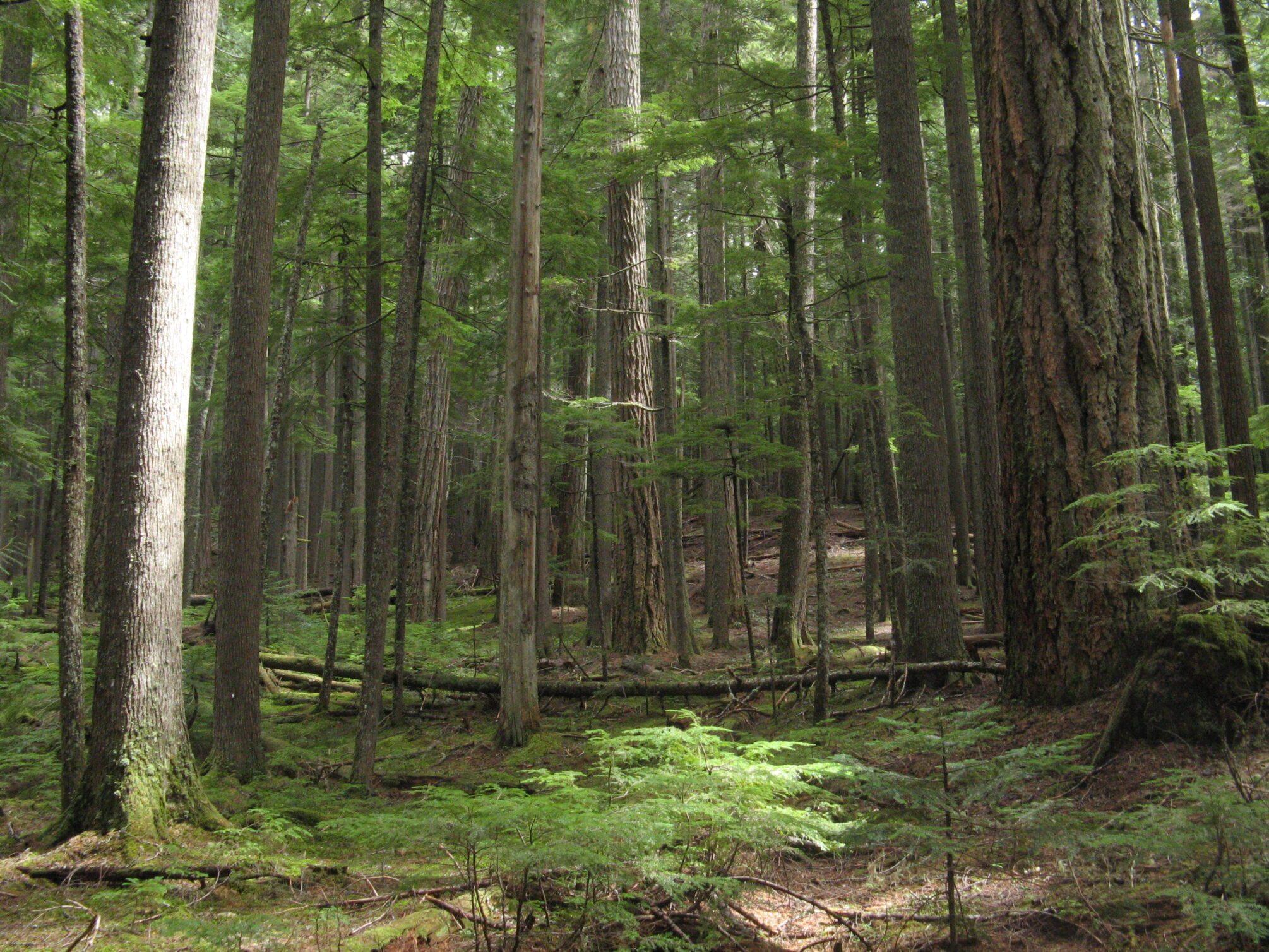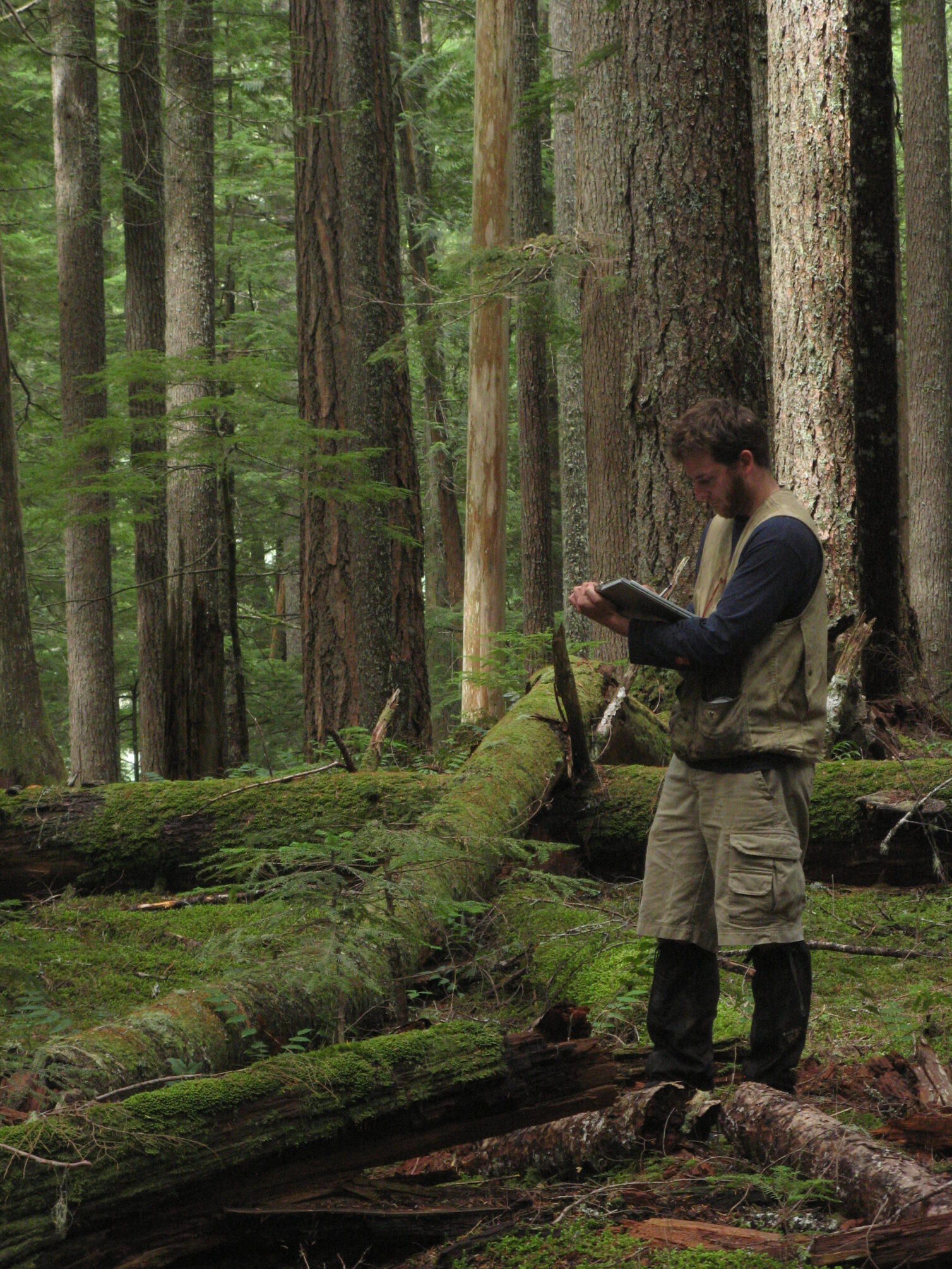A new study leveraging a 40-year data set from old-growth forests demonstrates that trees can experience growth suppression or release depending on the identity and size of their downed neighbor.
By Molly Reichenborn, Graduate Student at NMSU and the Jornada Basin LTER

Credit: Credit: Dr. Andrew J. Larson, CC BY-SA 4.0.
Beyond the neighborhood
Like all communities, individual trees interact with and are connected to each other, and are impacted when their neighbors die. The loss of a tree from the forest canopy can provide greater access to limited ecosystem resources for surrounding trees, encourage the recruitment of new individuals, and ultimately affect what the community looks like over time. Current understanding of forest community dynamics is largely based on the response of groups of trees: those immediately surrounding a focal individual (neighborhood) or within the larger community (stand). Although interactions between individual trees could play an important role in understanding what happens after trees die, testing this hypothesis would require tracking many individuals over decades to allow enough time for trees to leave the canopy naturally. Luckily the groundwork for just such a dataset was laid over 40 years ago.
Leveraging long-term data to understand long-lived forest communities
In 1977, the Andrews Forest LTER, University of Washington, Oregon State University, USDA Forest Service Pacific Northwest Research Station and the National Park Service collaborated to establish 1-hectare permanent plots in primary coniferous forest stands in Mount Rainier National Park. Since their establishment, researchers have surveyed tree growth and health—as well as establishment of new seedlings—about every five years. “It’s just not something that’s very simple to do,” remarked Dr. Alana Chin, a postdoctoral researcher at ETH Zürich and lead author of a new study published in Forest Ecology and Management. “There were over 9,000 individual trees monitored in these permanent plots, and there’s not a lot of data like that out there.” Her study utilized these long-term data to examine the growth of individual trees after their nearest neighbor dies.

Credit: Credit: Dr. Andrew J. Larson, CC BY-SA 4.0.
Dr. Chin and her co-authors found that tree growth responses were influenced by species relationships: if the surviving nearest neighbor was the same species as a fallen tree, no change in growth was detected. When a heterospecific neighbor died however, surviving trees experienced increased growth, indicating greater between-species competition over within-species competition in individual tree growth responses.
While the data set was sufficiently large to tease out this overall result, comparing growth responses between all possible species combinations was limited by the number of times different species survived and died next to one another. “We couldn’t really get into how they interacted with each individual species because there just weren’t enough combinations of who was alive and who was dead.” Dr. Chin noted. “I think we might see more things as more trees are recruited, which of course, takes time.”
The size of trees, both of the fallen individual and their nearest neighbor, were also important in explaining the growth response of surviving trees following their neighbor’s death. On the whole, surviving neighbors experienced increased growth following the death of a neighbor, which is generally expected given relief from competitive pressure. But for small trees (< 15 cm) following the death of a nearby larger tree, growth was suppressed, suggesting a facilitative relationship between small trees and their larger neighbors.
“It was really surprising to me that we found facilitation at all.” Dr. Chin said when asked about unexpected outcomes of the study. “That is just something that people think happens, there’s evidence for it, but it can be very hard to detect in these systems. There are papers out there that have demonstrated on a small scale that these little trees can be subsidized by big trees, but to see that with a totally different approach was really exciting.”
Mind the gap
The detailed, long-term data set generated by the work of the Andrews Forest LTER alongside many collaborators has allowed for a unique approach to understanding primary growth forest dynamics in response to natural mortality events. But these results could be important to consider in the management of secondary forests as well. “I think it helps us consider what the effects might be if we, say, go in and clear out some large trees to try and promote growth release in small trees,” Dr. Chin observed of their finding that smaller trees appear to be facilitated by their larger neighbors. “If all these trees have growth that’s been subsidized until they reach a certain size class, maybe there’s a good reason to not go in and take out all the large trees in order to promote the growth of the small trees.”
Better still, insights from these data will only get better with age. Long-term data collection in Mount Rainier National Park continues to this day, and the ability to examine growth responses between all species, and better predict responses following mortality events, will grow with the data set. With time, more data and better ecological understanding are always on the horizon.










